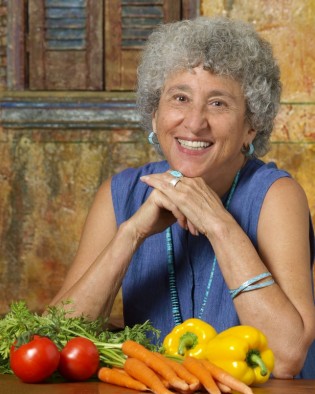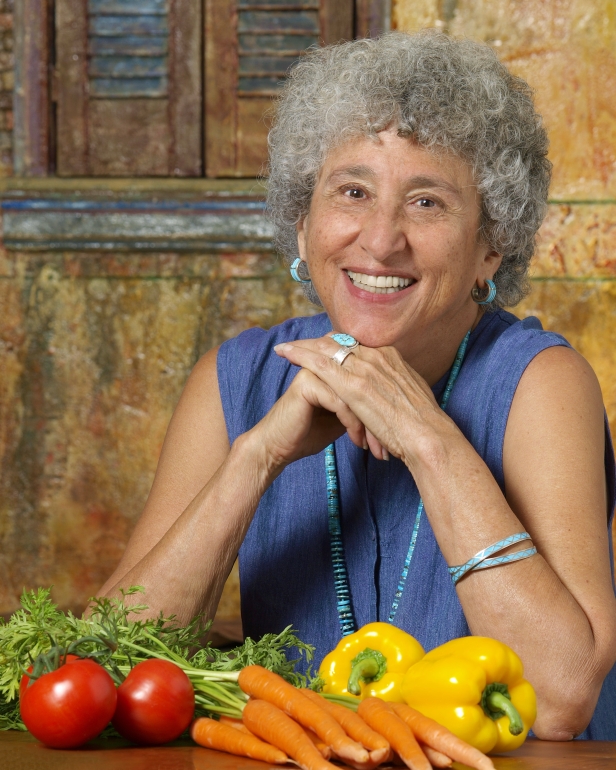 Marion NestlePhoto: New York University “At first I didn’t think agriculture had anything to do with food,” admitted renowned nutritionist Marion Nestle. “Now I don’t think you can learn anything about how our food system works without understanding agriculture.”
Marion NestlePhoto: New York University “At first I didn’t think agriculture had anything to do with food,” admitted renowned nutritionist Marion Nestle. “Now I don’t think you can learn anything about how our food system works without understanding agriculture.”
Her confession speaks volumes about America’s evolving (and obsessive) ideas surrounding food, nutrition, and public health. Nestle, author of the seminal book Food Politics, is a food systems researcher at New York University who has been writing and teaching about these issues for the past 35 years, long before they entered the mainstream vogue.
With that, she launched into the energetic third lecture in the University of Washington’s food and environment series with an obligatory nod to the issues of hunger and malnutrition. In stark contrast to crop scientist and previous series speaker Gebisa Ejeta, Nestle quickly presented these problems as having social, rather than technical, solutions: education, political stability, and access to clean water and safe food. She then leapt ahead to the flip side of hunger’s coin: obesity.
“The public is demonstrably confused about diet and health,” Nestle said. She went on to declare unapologetically how simple it all really is, referencing a list of food rules similar to Michael Pollan’s seven words of wisdom: Eat food. Not too much. Mostly plants. If this basic human instinct — eating — seems more complicated than that, she said frankly, it’s the effect of food marketing.
The fat of the land
“Eating less is bad for business!” Nestle told the crowd. That’s probably the only thing she and food industry execs would agree upon.
For most of the last century, obesity rates in America moved about as much as a couch potato (hanging around 15 percent). Then, in the early 1980s obesity took off in a most un-couch-potato-like fashion, and by the 21st century, 33 percent of the U.S. population was obese. Though studies aren’t crystal-clear on this, it does not appear that people were significantly more active 30 years ago. They were, however, eating at least* 200 calories less each day than they are now. (*When citing these statistics, Nestle advised the rapt audience to keep in mind that “everyone lies about how much they eat.” I don’t disagree.)
So where are all these extra, mysterious (and they are mysterious!) calories coming from?
This is where Nestle began to discover that agriculture really does have something to do with food. The extra calories were coming from the amber waves of grain in America’s loosening Corn Belt and expanding Bread Basket, propped up by growing government agricultural subsidies. At the same time, Wall Street was transforming the way corporations were valued: By shifting preference to short-term revenue gains, investors prompted food companies to start selling more food if they wanted to be worth their weight in golden corn flakes.
How Big Food persuaded us to eat more and more and more is simultaneously an impressive marketing feat and so obvious it’s kind of embarrassing to anyone who’s ever held a spoon and empty carton and wondered what happened to all the ice cream. Ag policy made meat, dairy, starch, and other high-calorie foods dirt-cheap in this country, which enabled people to eat out more. Once they were seated in a restaurant, the portions on their plates got bigger and somehow the fact that larger portions had more calories was lost on Americans.
If we can’t do the math to figure out that the 64-ounce Double Gulp soda from 7-11 has eight times the calories of the USDA-recommended 8-ounce beverage serving, then maybe we should be talking about education reform instead.
The other secrets of how Big Food helped make America overweight and ill are equally obvious: ubiquity (you can get food fast, conveniently, and cheaply just about anywhere, including places it was never previously allowed, like book stores); proximity (vending machines, anyone?); and everyday low, low prices (except for the stuff we should eat the most, i.e. fresh fruits and vegetables). At the same time, the FDA stopped fighting food companies’ “right” to make product health claims (Aren’t you glad the First Amendment protects the right of food companies to market junk food to kids? Nestle prodded), and allowed industry to create their own nutritional standards (of course, Froot Loops are a “Smart Choice” for kids — oh wait).
Market watch
 And if you can’t see any stars?Image: Guiding StarsI got a huge kick out of Nestle’s account of Hannaford supermarkets’ experiment in asking independent (read: non-industry) nutritionists to create a health rating system for food. “Guiding Stars,” with its zero- to three-star rating system, was the result. However, only 24 percent of the 27,500 products in that grocery store could qualify for even one star. Most of that was — surprise! — fresh produce.
And if you can’t see any stars?Image: Guiding StarsI got a huge kick out of Nestle’s account of Hannaford supermarkets’ experiment in asking independent (read: non-industry) nutritionists to create a health rating system for food. “Guiding Stars,” with its zero- to three-star rating system, was the result. However, only 24 percent of the 27,500 products in that grocery store could qualify for even one star. Most of that was — surprise! — fresh produce.
I was also struck by Nestle calling B.S. on the manufactured perception that “kids’ food” should be any different than “adult food.” It turns out kids’ menus are baloney! Food companies have invested a lot in this desire for “kids to think there are foods made just for them,” Nestle said. “Not like the boring food their parents eat.” Look no further than the more than $40 million Kellogg’s spent in 2009 advertising two “kids’ cereals,” Frosted Flakes and Froot Loops.
With all of that money going where our mouths are, “can the food industry play a constructive role in fighting obesity?” Nestle wondered rhetorically. Not when the goals of industry and public health are not the same, she answered.
The final issue Nestle touched on is food safety. We’re still talking about a food safety system in the U.S. that is on par with The Jungle of the early 1900s, the dangers of which are becoming more and more painfully evident. The good news, according to Nestle, is that we know how to produce safe food. The U.S. needs one agency to oversee all foods, from farm to table, that can put out science-based regulations, testing, and enforcement across the food system. (Currently, oversight is split between the FDA and USDA, and both have embedded conflicts of interest in carrying out their regulatory responsibilities.) Will that actually happen? Not without a lot of advocacy.
While Nestle’s buffet of challenges facing eaters in America was more than I could digest in one evening, she appeared pretty optimistic. “It’s fun to be a
part of the food revolution going on right now,” she said. Because when we talk about the food movement, “we’re really talking about democracy.”
“Personal responsibility is very important,” Nestle reminded us, “but we need to be serious about changing social policy.” From school gardens and neighborhood farms to food safety reform and food labeling, no one who wants to get involved will ever go hungry for lack of options. She recommended that people pick the areas they like the most and throw themselves at them. As for me, I’ve picked container gardening, volunteering with organic gardening education nonprofit Seattle Tilth, and subscribing to my beloved Washington State CSA, Tiny’s Organic.
What food issues ripe for change have you picked? What area would you like to get more involved with?




